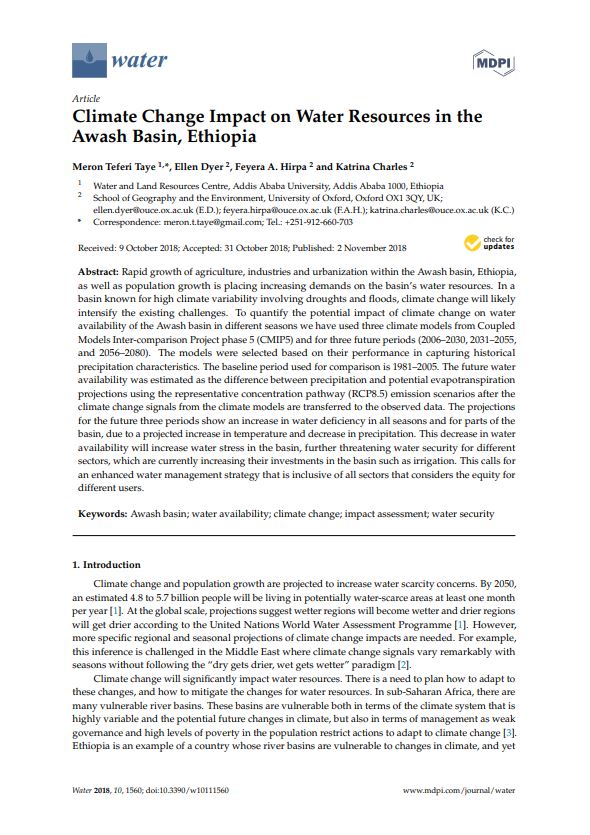Authors: Meron Teferi Taye , Ellen Dyer, Feyera A. Hirpa and Katrina Charles
Rapid growth of agriculture, industries and urbanization within the Awash basin, Ethiopia, as well as population growth is placing increasing demands on the basin’s water resources. In a basin known for high climate variability involving droughts and floods, climate change will likely intensify the existing challenges. To quantify the potential impact of climate change on water availability of the Awash basin in different seasons we have used three climate models from Coupled Models Inter-comparison Project phase 5 (CMIP5) and for three future periods (2006–2030, 2031–2055, and 2056–2080). The models were selected based on their performance in capturing historical precipitation characteristics. The baseline period used for comparison is 1981–2005. The future water availability was estimated as the difference between precipitation and potential evapotranspiration projections using the representative concentration pathway (RCP8.5) emission scenarios after the climate change signals from the climate models are transferred to the observed data. The projections for the future three periods show an increase in water deficiency in all seasons and for parts of the basin, due to a projected increase in temperature and decrease in precipitation. This decrease in water availability will increase water stress in the basin, further threatening water security for different sectors, which are currently increasing their investments in the basin such as irrigation. This calls for an enhanced water management strategy that is inclusive of all sectors that considers the equity for different users.
This article was published open access in Water MDPI. Click the Download button to access the article.

